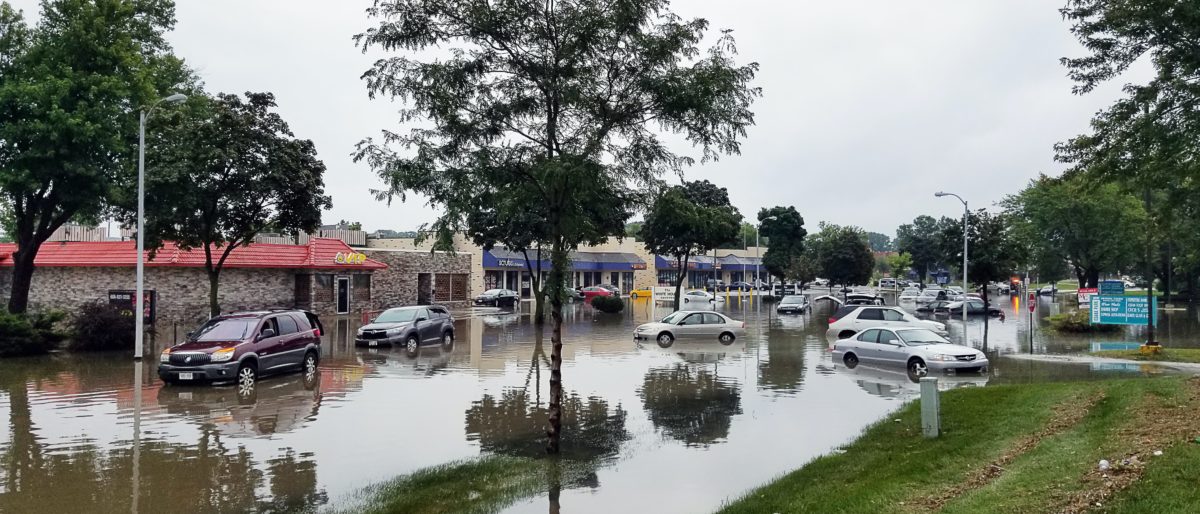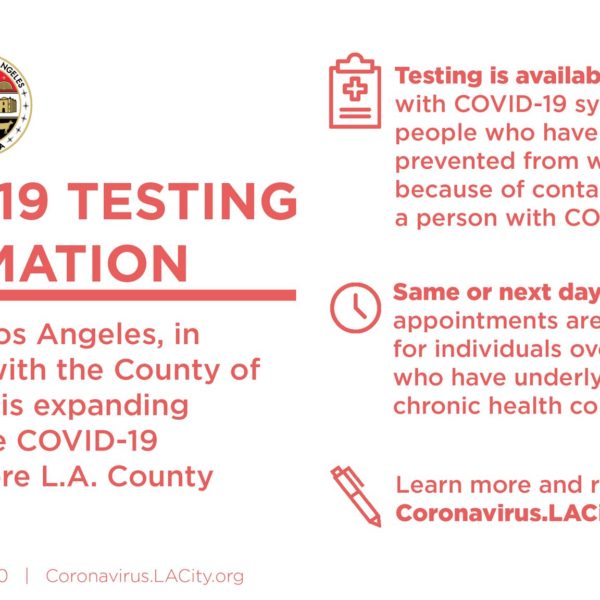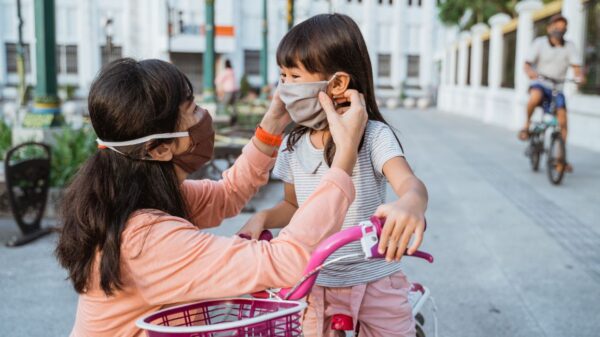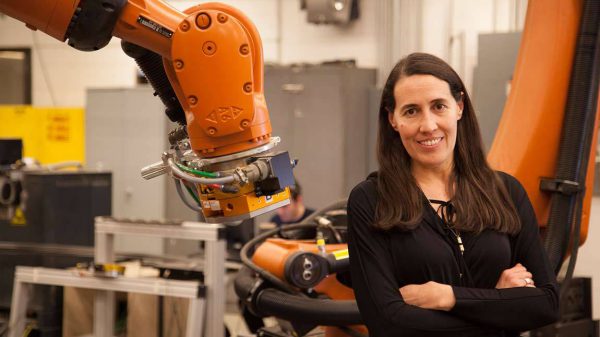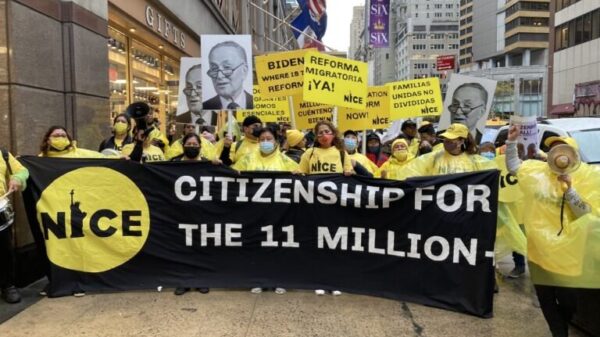To help Californians impacted by the recent flood disaster better understand the range of recovery resources available and how to access them online, by phone, or in person, Ethnic Media Services and California Black Media will present a statewide ethnic media briefing in partnership with Listos California, a program of the Governor’s Office of Emergency Services (Cal OES). At a briefing hosted by EMS (Ethnic Media Services) representatives from the California Office of Emergency Services and other state and federal representatives shared resources on how to get assistance.
Moderator Regina Brown Wilson Executive Director of California Black Media
Diana Crofts-Pelayo, Assistant Director, Crisis Communication & Public Affairs, Cal OES
I am with the California Governor’s office of emergency services and here generally to give a high-level overview of the work being done specifically to help the state of California recover from these winter storms quick overview. These winter storms have caused damage and destruction to communities statewide. Nine atmospheric rivers, trillions of gallons of water, many weeks of wind, snow, and rain, and unfortunately 21 deaths recorded so far. It’s really been an incredible force of nature. But also I will say that the state and its partners on the local and federal levels have stepped up in an incredible way as well to ensure Californians have the resources they needed before, during, and after these storms. To remind folks of where we’ve come so far, California really held a tightly coordinated response to these winter storms very quickly. Governor Newsom included 41 counties in his emergency declaration and basically, this was to assist with rapid resources from the federal government to come into local communities to help with any response needed during the storms.
We asked the state to submit a presidential major disaster declaration for 49 counties, so far FEMA has approved nine specifically for this individualized financial support. But ultimately we want people to know that the state of California is committed to continuing our support to communities and maximizing the aid that comes in to help them recover from winter storms. And so, now that this major disaster declaration has been declared, eligibility for federal programs will be based specifically on the unique damage and extent of impacts incurred locally.
When it comes to a lot of the support that they receive generally and so that specific example of how we are actually partnering with trusted messengers and community-based organizations through this recovery effort to maximize and help survivors get the resources that they need and also co-working with FEMA on a lot of this is, I think a national model that we’re hoping is followed in other disasters as well, and as we look to kind of help communities recover quickly, we can’t forget that we need to be prepared and be vigilant as we see more complex and natural disasters. It’s not and if but when the next disaster strikes. And so I think that we hadn’t really thought that we would have a major flooding incident in California. We’re known for our wildfires and earthquakes. But ultimately we want California to be prepared for a whole host of natural disasters that could occur in their area. And so as the governor has said before the hots are getting hotter, wets are wetter and the dries are even drier and so we will begin and continue to see kind of these ever-complex natural disasters and emergencies hitting California in unique ways that maybe we haven’t seen before. We’ll discuss a little bit more about the resources available to survivors of these winter storms, but generally, really want people to know that they can go to listosCalifornia.org for preparedness tips. And those are five simple steps that can be used in any emergency or disaster. And so it’s good to be aware and let this be a reminder for you to have those conversations with your family and really make the difference for the next time an emergency strikes.
Robert Troy, Assistant Director, Interagency Recovery Coordination, Cal OES
I’m the assistant director for interagency Recovery coordination here at Cal OES. Yes for a little background on Cal OES. Within Cal OES the recovery director is responsible for identifying disaster impacts and assisting local government, special districts, non-profits, organizations, individuals, and businesses impacted by disaster to gain access to whatever available recovery support resources are available for that particular disaster. It’s our job to find, and truly measure the impacts of disasters because all disasters are different and to try and bring together whatever support we can that will help local communities respond to those disasters. Also, work with our state and federal partners to provide coordinated and efficient timely support throughout the recovery process. The recovery process starts on day one and can take years for large-scale disasters. And so certainly that will be the case here as well.
During a disaster, Cal OES works with local governments to rapidly respond and recon and help support recovery. So every single county in the state has a dedicated Cal OES emergency service. So we have established relationships with every County within the state so that when the disaster strikes we are not shaking hands and are producing ourselves after the fact and so that’s really key to have those three established relationships and trust established before the disaster happens. After that happens, we, as soon as possible bring to the table all available recovery partners. So as has been mentioned we have already a number of approvals from FEMA to bring in federal Disaster Recovery support and also from the small business administration, they are both really key partners that we work with on a regular basis to support recovery needs here in California.
There’s a saying in emergency management that all disasters begin and end locally, and that is certainly true. But it is our mission here at Cal OES to ensure that local communities. Don’t do that alone Calais is there with them on day one and until the final days of recovery are underway. And so as part of that, we work to do damage assessments for the impacted areas and communities, and as you can imagine in an event like this, where almost the entire state has been impacted that is truly a Herculean effort to do that. We really appreciate our federal partners stepping in and being here with us in person across the state to do those damage assessments as was mentioned. We currently have nine counties that have been included for the individual assistance program.
But we currently have teams made up of State local and federal Partners out across the state today conducting additional damage assessments and wherever we can we will add additional counties to that major disaster declaration.
There’s also something called the public assistance program, which is a federally funded but also state-funded program where we can help local communities, and local governments to pay for and reimburse for the response and recovery costs. For the local impacts and that helps to free up funding to help provide for other types of recovery needs and so we currently have nine counties that are also approved for that program, but we expect many more to be added hopefully in the very near future and we’ll certainly keep you informed on that.
Diana mentioned that we had an expedited major disaster declaration request that was approved and that was really to bring all of the federal family to the table to help partner with the state to support the response to the disaster, but we’re in the process of following up with recovery programs that will provide long term support to counties and communities here in California.
Help is available both online and in person so we’ve worked with our local partners as well as our state and federal partners to set up local assistance centers or disaster recovery centers across the state. As of today, we have seven that are open today and another seven that are going to be coming online and open soon. And those are noted on the Cal OES recovery website. And then our FEMA partner Brian Bowie, we’ll discuss also out how folks that live within declared counties can register and get FEMA support whether online or in person.
Brian Bui, Region 9 Emergency Management Specialist, Federal Emergency Management Agency (FEMA)
I am an Emergency Management specialist from FEMA region 9 out in Oakland, California. Talking about the assistance available to individual survivors that were directly impacted by this storm or these storms and individual assistance is a pretty sizable self-component of FEMA which includes Mass care and Emergency Services, voluntary agency coordination, Community Services programming including disaster case management crisis, counseling assistance, disaster legal services, and disaster unemployment assistance. I want to focus on the individuals and households program for today’s presentation.
And as a previous speaker mentioned, there were 49 counties under the emergency declaration. But under the current major disaster declaration, there are currently nine designated. In counties designated for individual assistance including those on the screens, Calaveras, Merced, Monterey, Sacramento, San Joaquin, San Luis Obispo, San Mateo, Santa Barbara, and Santa Cruz, there is a potential for additional counties to be designated for Indigent individual assistants. And as the story mentioned we continue to conduct joint damage assessments with County officials the SBA Cal OES and FEMA.
So as it relates to individuals they are able to register for FEMA and may be eligible for assistance under the IHP the individuals and household programs. The two major sub-components of the IHP include housing assistance and other needs assistance. Under housing assistance, eligible survivors may be eligible for rental assistance, temporary lodging, repair Assistance, or replacement assistance, and under other needs assistance, property, and personal property damage can be replaced. Transportation repairs can be assisted with funeral costs, medical and dental costs, child care, and other miscellaneous costs, the current maximum for each category of assistance this fiscal year is up to 41,000 per household. And this is of course losses not covered by insurance.
So for the process of registering for FEMA, an applicant can call the 1-800 number. That’s one eight hundred six two one FEMA. That’s 3362. And as Mr. Troy mentioned they can also go in person to a state-local Assistance Center or a joint Disaster Recovery Center. There’s knowledgeable staff not only from FEMA IA but also mitigation that can assist with a survivor’s recovery efforts. A survivor can also register for FEMA via the Internet, that’s disasterassistance.gov or download the FEMA app onto their mobile device. The registration deadline is March 16th of this year for all designated counties and assistance is provided for up to 18 months after the date of declaration or July 15th, 2024.
And in order to be eligible for FEMA a survivor must meet the general conditions of eligibility which includes being a US citizen, a non-citizen national, or a qualified alien. They must prove their identity and that they were occupying the primary residence at the time of the disaster. Also, this is for uninsured or underinsured disaster-cause expenses and serious needs.
The three categories of eligibility include US citizens non-national Citizens and qualified aliens.
Luis Santos Serrano, Public Affairs Specialist in the US Small Business Administration Oce of Disaster Recovery and Resiliency
Thank you for the invitation and the opportunity that everyone is giving us at the SBA to share very important information and how the multi-agency effort for this presidential disaster declaration that’s been approved already. The small business administration or SBA works and offers Disaster Assistance. SB offers federal loan interest alone to businesses. The sizes most private, non-profit organizations homeowners, and businesses of any size may borrow up to two million dollars for the specific purpose to repair or replace the disaster property damage. That’s what we call a physical disaster long so businesses may apply for two million dollars and the interest rate can be as low as three point three zero five percent so it can be a really low-interest disaster loan for small businesses. Small businesses engage in agriculture and most private nonprofit organizations may also borrow to help meet disaster costs, and working capital needs if you need funds, extra funds because your business let me just give you a very quick example just business West impact economically because it needed to close the doors because of the floods customers, stopped getting to your shop or you have less cash available and you need working Capital Loans.
You may apply up to two million dollars or in a combination if your business was impacted physically and you need funds to repair or replace the accessory property damage including machinery equipment, and inventory among others. And at the same time, you need a working capital Loan. In combination, the maximum is up to two million dollars. But not only for businesses. If you’re a homeowner or a renter FEMA May refer you to the SBA.
SBA disaster loans are the primary source of money to pay for repair or replacement needs or costs not fully covered by insurance or other compensation. So we encourage everyone if they have insurance, please so then your insurance request so you can have a better understanding and better overview. If you may need additional funds to recover you may apply for a federal law interest alone and for homeowners, may borrow up to two hundred thousand dollars to repair or replace their primary residence. If you’re a homeowner but have multiple residences for your primary wrestling it will be up to 200,000.
And if your additional homes may be considered as businesses, so you may apply as well.
Homeowners and renters may borrow up to $40,000. For what to replace personal property including vehicles so that personal property, that wet damage for example, because of the floods your TV and other things inside your homework are damaged, and that is what we call personal property. You may apply off to 40,000 dollars. So our recommendation here from the SBA and our multi-agency effort is to help you get back to the day before you were impacted by the disaster. Specifically, this was the winter storm that flooded the mudslide that a core started on December 27, 2022. We encourage everyone to first register with FEMA at www.thesecure system.gov and www.passyourassistant.gov. And that’s the faster way that you can start the recovery process.
For homeowners and renters you can decide or you should submit your SBA disaster loan application, even if you’re not sure that you will need or want that loan. This is actually a declaration that has a due date for you to submit your registration with FEMA or your application and speak about the SBA.
We work and follow the lead of the feet Federal Emergency Management Agency FEMA, the physical damage due date to submit. Your application is March 16, 20 23 while we encourage we want to submit your application for a federal loan interest is actually a loan because that will give you access to determine if you need that additional phone.
The SBA may offer we do have credit requirements like credit history applicants must have a credit history set acceptable to the SBA and repayment. Of course applicants, most show the ability to repay all loans. So that will determine if the SBA can offer you that loan.
If SBA offers you a loan you can decide at that moment if you want to take that loan, if you don’t want to take it, at least we put the offer right and you will have a letter you can come back for a specific time frame and request. In reconciliation with the SBA, if SBA offered you in the past the loan and you decided back then that you didn’t want it at that moment. So you will have that available and that’s gonna be that day that you will have that time frame for you to come back to the SBA and request we consider if SBA offers you a loan will be discerning in the letter that you will receive. So that’s why I always encourage everyone to submit their application and for the economic injury that working capital loan that we spoke for small businesses or more and most private non-profit organizations. It will be on October 16 20 23. So you have nine months since the day of this Declaration.
As I mentioned before interest rates are very low for Home Loans and can be as slow low as 2.313 percent for businesses the interest rate can be as low as 3.305% and of course, the maximum number of years to repay this loan is 30 years.
How you can have more information we encourage everyone in Merced County and the surrounding county in Merced County specifically. We have two centers right now. We’re located in the fairgrounds area Merced Fairgrounds, and we have another one located in planata over there. You can request more information and assistance from all the agencies and locals and local Representatives that are allocated in those centers including FEMA and the SBA. So we encourage everyone to visit those centers. The one located in Fairgrounds is open Monday to Sunday seven am to seven PM, and the one located in planata for Merced County planet is Monday to Sunday am to five PM. If you want more information, you can call us as well: 1 800-6592955
Diane Diana Contreras with the Catholic Charities of the Diocese of Fresno.
I’m the program manager for our lease those California and our medical program. We have offices in Bakersfield, Fresno, and Merced, and of course because of the flood, disaster, and recovery efforts are and we’re set right now. We’ve been really focusing on that area. So I want to just give a little bit more of the community side of what we’ve been doing, how we’ve been responding, and also share some of the concerns that we’ve been hearing from our clients and the residents in that area.
From the first day of the flood, we responded by providing our usual services. So our office is a walk-in office. We have clothing and a food pantry that is really where we get our most foot traffic. And so we responded by providing food to the migrant camps in Merced, which as we know was a community that was deeply affected and we had a table at the fairgrounds which was the disaster relief center. And so being there we continue to share information, if anyone needed any of our services, we worked around the clock to provide them. Because of the disaster our food pantry, the items became something that would be easier for our families to prepare and eat and so we’re talking about granola bars. We had Lunchables for the children’s crackers. We have delivered a ton of
water and also because we have a big truck where we’re able to do our deliveries. We have also volunteers to transport a lot of donated items from other organizations and churches. And so we partnered with the two local Catholic churches in the community
Saint Vincent De Paul and Sacred Heart have been amazing at responding to some of the needs regarding pillows and blankets. And so we partnered with them to distribute those across the city of Merced.
One of the bigger services that we’ve recently added and just kicked off at Catholic Charities we were the disaster relief center. We also have services for CalFresh and Medical enrollment. And so that has been a big ask. We are helping families do the application process as we know we’ve heard that there might be some type of disaster relief with CalFresh and so assisting families to start that process now, we work with them through the whole application process of these families very overwhelmed, very emotionally drained and so our assistance in being their case managers per se.
We also have a diaper program. And so we’ve been helping anyone that needs assistance there, but we recently received news that we have been identified to start what we are calling the disaster case management program in response to the flooding in Merced. This is a program funded by FEMA, the California Department of Social Services, and Cal OES. And so Catholic Charities have this program before. We focus on families and victims of the Creek Fire and so we basically are going to start this program, but now in Mercedes geared as the family and the victims of flooding and so this program is something that just passed off actually today. Our program manager just started in Merced but we are hitting the ground running. As you know, there’s a lot of need in that area. And so basically the program is going to assist families in Merced County.
In the next two years as we know the effects and the disaster that these families are going to be dealing with is going to go well off, beyond months and weeks and so we are going to be helping these people to create a long-term recovery plan. And so really that can look different for every family that could be connecting survivors to any community resources that are in the area just identifying what someone can apply to help them even with advocacy and appeals a lot of the families are very overwhelmed with just the process or speaking with FEMA. We find that they’re not asking all their questions at the booth. Maybe they felt a little bit overwhelmed, or Maybe there is a language barrier. And so we really are just that in between to a system through the process. We are finding that a lot of families have questions about their immigration status. I know we’ve already gotten a response that there’s a way that we can assist, but a lot of these rules and my family Farm Workers sort of are used to word of mouth and asking a family member or a neighbor about information and so even just helping them identify who are the credible resources that they need to go to to be getting information that alone can be something that a case manager assists the family with. So we’re really excited that we have the opportunity to kick this program off almost immediately. Right now are in the process of signing people up and really that just collecting information and it’s doing a quick screening as to what needs you may have. What are you doing, your family needs and putting you into our system and we’re in the process of hiring our case managers. And so we already want to have the information ready. And so when the staff does come in, they already have a staff of files and families to begin working with some of the other concerns that we’ve had has also just been the elderly community, they need assistance from the physical aspect of it, getting things out of the house, the fear of mold building up it can be wet mattresses or make things in that nature. And so that’s something that we as case managers can assist with whether it be finding an organization or finding volunteers that can assist with that to even filling out paperwork. We have elderly that are hard of hearing. Maybe they can’t read, or they don’t have a son or a daughter or someone to assist them with this paperwork. So we’re seeing a big need there with the elderly community and as well as with the migrant, the farm working and immigration.
The solution before even the disaster Catholic Charities, we do rule food distribution. We have always gone out to areas where families may not have a means of transportation or areas where it’s a lot more common for there to be multiple families living in one home.
Or a grandmother’s home as some people know it and so we go to them and we distribute anywhere from two different times 300 bags of food. And so that’s something that we’re continuing to do during this. Now that we’re in recovery mode and providing them with that as well as back in our office, we have a slight program we help anybody that has recently come into the country that needs help connecting. These resources are the immigration program and rent and utility assistance. So we’re working all around the clock as we kick off our new disaster case management.

